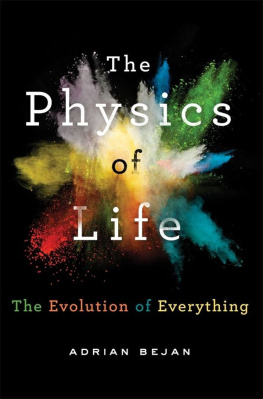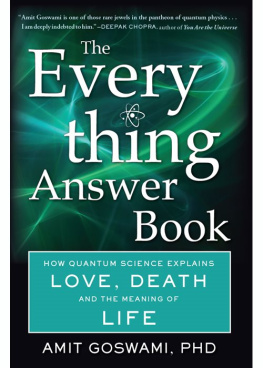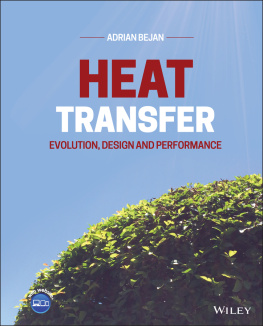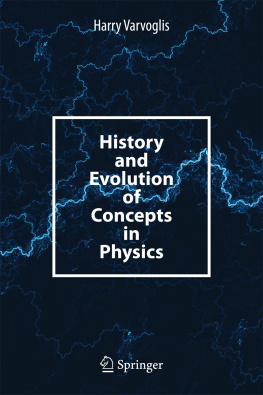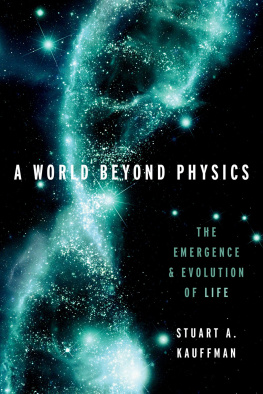The Physics of Life
The Evolution of Everything
Adrian Bejan

St. Martins Press
New York
Thank you for buying this St. Martins Press ebook.
To receive special offers, bonus content, and info on new releases and other great reads, sign up for our newsletters.

Or visit us online at us.macmillan.com/newslettersignup
For email updates on the author, click here.
The author and publisher have provided this e-book to you for your personal use only. You may not make this e-book publicly available in any way. Copyright infringement is against the law. If you believe the copy of this e-book you are reading infringes on the authors copyright, please notify the publisher at: us.macmillanusa.com/piracy .
To live or not to live, that is not even a question. Life is a universal tendency in nature. It is physical movement with the freedom to change. Every moving, flowing and hurtling thing exhibits the tendency to move more easily and to keep moving by changing its configuration, path and rhythm. This evolutionary flow organization and its end (death) are nature, the animate and inanimate realms together.
The question is, what is life, as physics? Why do life, death and evolution happen?
In this book, I answer this question. In fact, had I not known the answer I would not have been able to formulate the question about what life is. In short, everything that happens by itself, everywhere and every time, is nature (or physics, from the Greek). Through our tiny lens as mortals, this means that everything obeys the laws of physics. By this I mean primarily the laws of physics that we all learn in middle school and high school, which have made sense to most people for generations.
In nature nothing moves unless it is driven, forced, pushed or pulled. The power behind this movement is generated by billions of natural engines that consume fuel in many forms, such as food for animals, gasoline for our vehicles, solar heating for atmospheric and oceanic circulation and the flow of water around the globe. The generated movement destroys its power instantlyit dissipates it in brakeswhile penetrating and displacing its ambient, which resists the movement. Engines and brakes are two natural phenomena as old as the earth itself.
The phenomenon of life and evolution is how power production and dissipation conspire to facilitate all movement on earth, animate and inanimate, river, wind, animal, human and machine. This is a distinct phenomenon and a first principle of physics, and it is called the constructal law.
To place the life question in terms of physics is to inject physics into the descriptive narrative of life inherited from Darwin. In that narrative the subject of physics is missing. To see why this injection is needed, consider some examples of things that move and spread over an area (animals, plagues, river basins, extraction of minerals and news). How they spread follows the well-known S-curve phenomenon: over time it increases slowly, then faster and finally slowly again. The existing models describe this phenomenon as competition, the fight for survival and resources, reproduction rate, territoriality, chance and so on. According to what law of physics? Indeed, what fight for survival, resources and reproduction can be seen in spreading designs such as the river delta, the ice volume of the snowflake or the number of citations of a scientific publication?
Viewed from physics, the phenomenon of life and evolution at first seems counterintuitive. Instead of doom and gloom about the future of life on earth, the constructal law of physics offers a much more optimistic point of view. Its why I have written this book. Here are a few examples:
The world is not running out of energy and water. There is plenty of solar heating falling on the Sahara, and plenty of rainfall in the Congo. What the world needs in order to keep moving (to live, that is, to reach sustainability) is the flow of useful energy (power) and drinkable water throughout the space inhabited by humans. This means power plants of all kinds (more engines) for territories still without electricity, and desalinated water for huge swaths of land in arid regions.
No group is going to cut back on fuel consumption, because nobody prefers poverty over wealth, or death over life. Arguing against impact on the environment is arguing against movement, against life itself.
Fuel consumption will continue to be hierarchical. The reason is that the movements that emerge naturally, from the river basin to global air traffic, are hierarchical, with few large and many small movers flowing together.
The evolution of anything that moves on earth, including human movement, leads to hierarchy in movement, naturally. The world is an exquisite fabric of superimposed river basins of flows that distinguish themselves through their hierarchy. Few large channels flow together with many small channels, and they depend on and mutually benefit each other in order to move effectively and with lasting power.
Two ways to flow, fast and slow, are much better than one. The fast are the few large, and the slow are the many small. This is the way to serve with flow an entire area or volume. We see this hierarchy occurring naturally everywhere, from traffic in the city, to oxygen transport in the lung and fast and slow thinking in the flow architecture of the brain.
The world is not getting out of control. Why? Because every spreading flow on a finite area is destined to have an S-shaped history of growth. Young flows spread slowly. Adolescent flows spread faster. Mature flows spread slowly. There is no such thing as the exponential or explosive growth of anything.
Complexity in this world is not racing upward, out of control. Complexity is modest, steady and predictable, like the 23 levels of branching in the air tubes of the human lung. Sure, a larger lung or a larger river basin is more complex because it is naturally hierarchical in a larger space. The traffic flow in New York City is more complex than in Durham. Neither is exploding in complexity, because if it did, the flow through it would die, at all scales.
Size makes for speed, longer life span and efficiency. We see this in everything that moves: animals, airplanes, rivers, atmospheric jets, rolling stones and whirls of turbulence. We witness this evolution in all sorts of technologies and athletics. For example, commercial aircraft have evolved predictably to look like the birds: heavier engines and fuel loads on heavier airplanes, wingspan equal to fuselage length, larger fuel load, longer range and longer flight time for larger flying bodies.
In athletics, the 100-meter sprint today is dominated by tall runners who take a few big steps to the finish line. Usain Bolt and the hippopotamus have comparable speeds because they have comparable heights. Yet, size is not the only evolutionary trend. In short-distance running, in addition to size, a high stride frequency is also an advantage. In long-distance running, the opposite evolutionary trend (toward smaller size) is the evolutionary path to winning. These contradictory trends are all predictable, from a physics point of view.
Cities will continue to grow, by natural design, not randomly. The design features (time, place and size) are now predictable because of the physics principle: few large streets allocated to many small streets, throughways and beltways. Cities happen, like all the other designs that humans unfold unwittingly because they facilitate human life: fire, power, speech, writing, science, rule of law, money, communications and sustainability.
Next page
